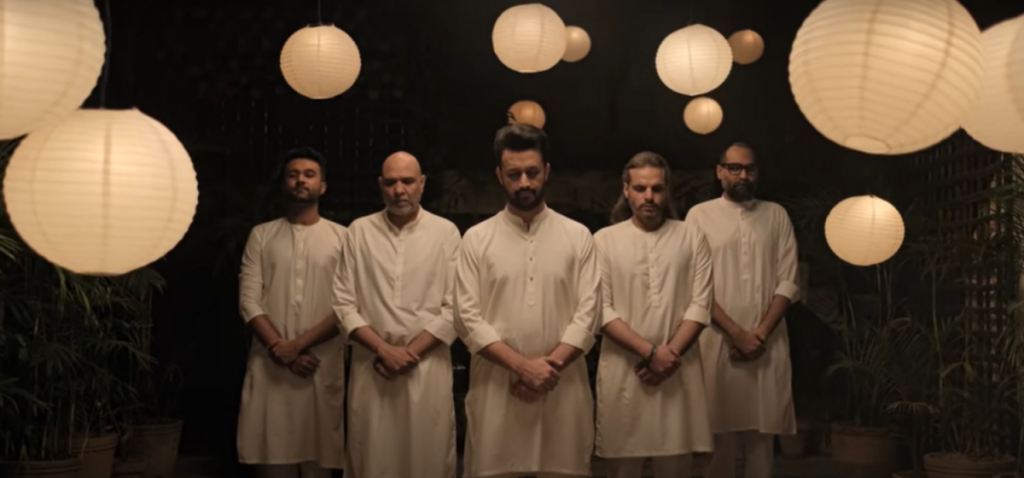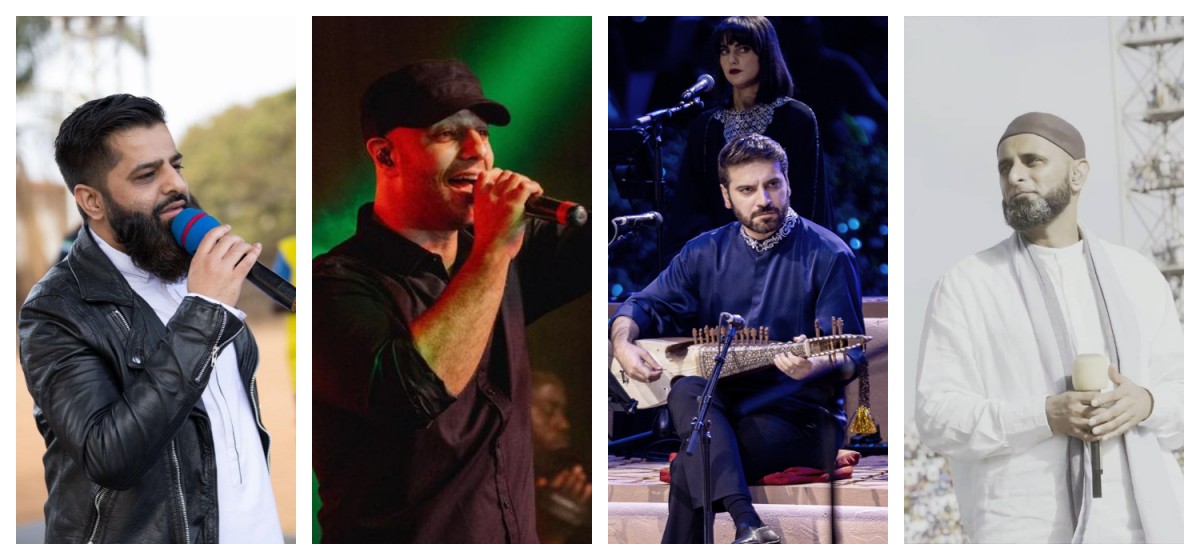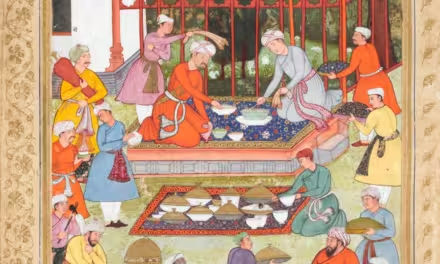L to R: Nasheed artists Omar Esa, Maher Zain, Sami Yusuf and Zain Bhikha. Illustration: The Wire. Photos: Official Facebook pages of the artists.
The British-Pakistani nasheed artist Omar Esa’s ‘Allah and his Beloved’ racked up millions of views and claimed the third spot last year on the music store iTunes UK chart. The continuing success of former R&B singer Esa’s new album comes less than four years after he made global headlines by reaching the number one spot on iTunes worldwide chart with his album My Muslim Family.
In an interview with Asian Image, UK’s leading Asian news website, Omar Esa said, “My friend introduced me to nasheeds, which are vocal-only Islamic songs. I sang my first nasheed in late 2011. My motivation is to provide Muslims with a Halaal substitute for music that can also be enjoyed. The tracks are upbeat, motivational, and spiritual.”
His catchphrase is “anything music can do, so can the voice – my voice is my instrument”. In the past few years, he has successfully been able to compete with exquisitely talented musicians and provided an alternative brand of music.
Nasheed is an Arabic word for ‘chants’. It is a work of vocal music. They are moral and religious recitations, recited in various melodies with/without musical instruments. Some nasheed groups use percussion instruments, such as the daff. The material and lyrics of a nasheed usually refer to Islamic beliefs, history, and religion.
Nasheeds have transformed over the years. Many of the modern nasheed artists are non-Arab and sing in different languages. Nasheed can be easily found in English, Malay, Urdu, or Turkish. They captivate people with their unique vocal virtuosity and lyrical exploration of devotional poetry.
During the holy month of Ramadan, Muslims restrain from worldly affairs and engage more with religion through reciting the Quran and replacing music with nasheeds, which has been one of the reasons for their growing popularity.
Numerous other nasheed artists who are making it big in this genre include Maher Zain, a Swedish nasheed artist who is one of the biggest names in the Islamic music genre; Sami Yousuf, a British singer and instrumentalist; South African Zain Bhikha; Yusuf Islam (formerly known as Cat Stevens), known internationally as the one who first sung Islamic songs in English. The list goes on. Nasheed artists appeal to worldwide Muslim audiences and perform at Islamic-oriented festivals (such as Mawlid), conferences, concerts, and shows.
Ruchika Mishra, a music enthusiast says, “I often listen to ‘Asma-ul-Husna’ by Atif Aslam. I didn’t know it was a nasheed until now. After a chaotic and exhausting day, I turn to nasheeds and qawwali for solace and tranquillity.”
Juned Mehmood Khan, a B.Ed student at Jamia Millia Islamia says, “Nasheeds are quite different from songs as they don’t require music. Listeners and reciters feel complete even without any background music. Personally while listening to it, I feel connected to the higher power. I also run a Youtube channel where I upload my self-composed nasheed.”
In South Asia, nasheeds are quite popular in the form of Hamd and Naat, which involve lyrics praising god and the Prophet respectively. It explores a form of acoustic splendour taking listeners on a spiritual journey.

A scene from Atif Aslam’s Mustafa Jaan e Rehmat. Photo: Screengrab via YouTube/Atif Aslam
“Even if I don’t understand the lyrics, it still affects me. It makes my heart at ease. I listen to Atif Aslam’s ‘Mustafa Jaan e Rehmat’ on a loop whenever I feel low. While listening to it, I feel like there’s hope, there’s much more to life, and things will turn back to normal. I now remember the lyrics by heart. They resonate with listeners of all faiths. This is because the idea is to seek the divine power which is all empowering and all-knowing,” says Vyom Priya, a Master’s student at Allahabad University.
For many years, Muslims, who have been yearning for an alternative to the spiritually devoid content of popular mainstream music, nasheeds have thrown open the gates for the emergence of a new entrant in the contemporary music industry. This created a niche category that has been successfully utilised/occupied by nasheed artists.
The easy access to and availability of the Internet have increased the global reach of the content. The number of music streaming apps have mushroomed and have provided a viable monetisation model for independent artists. These apps allow artists to publicise their content, release their tracks and directly interact with their listeners.
With the advent of multiple music streaming platforms such as Spotify, Amazon Music, Apple Music, Pandora, and others, more avenues are opening up for artists. The trends and consumption patterns in the industry are rapidly changing. These platforms facilitate diverse and rookie artists in reaching out to larger audiences, opening a wide range of opportunities for artists.
This easy access and reach have helped numerous nasheed artists to make it big in this genre. While every industry endures change, the music world seems to shift drastically every few decades. It must be kept in mind that ten, twenty, or potentially even thirty years from now, things might be completely different.
By Khansa Juned














